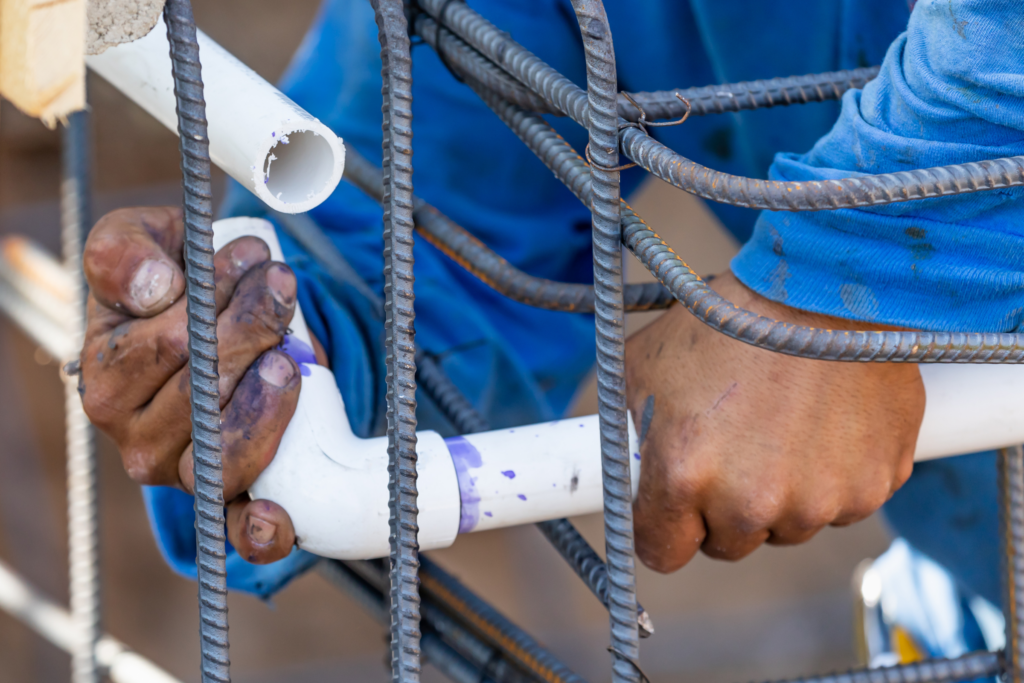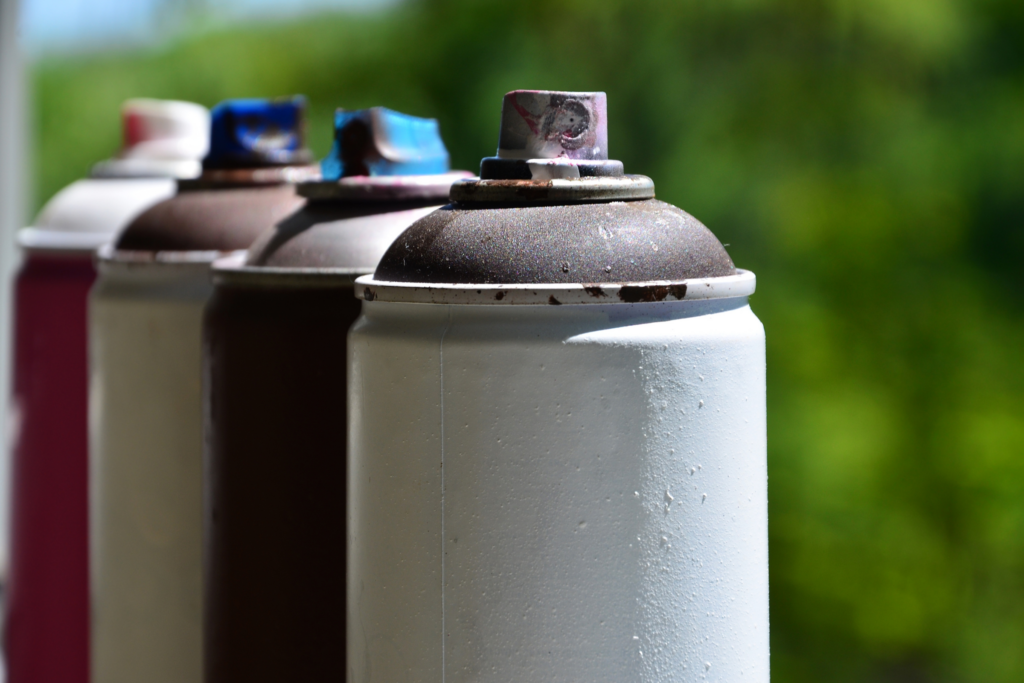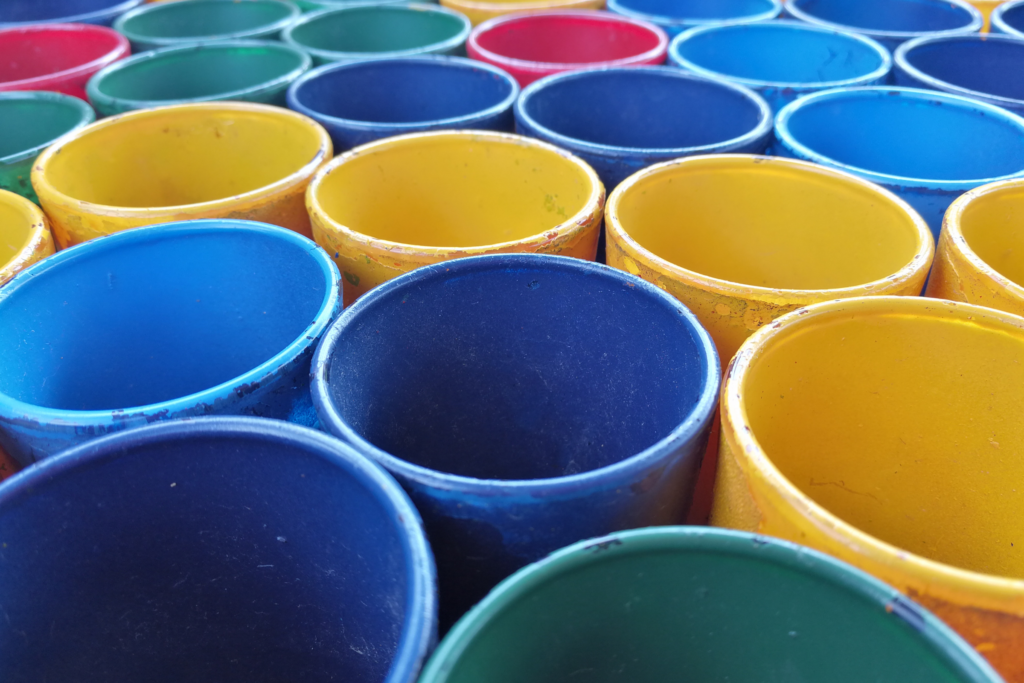Can You Spray Paint PVC Pipe? (How to in 3 simple steps)
Spray Painting PVC Pipes is a great way to give your PVC pipe an instant makeover, but it is very important to pick the correct type of spray paint for this project.
You can easily spray paint PVC with the right paint and some preparation. The best way to spray paint PVC is to rough up the surface with sandpaper, clean it, and then apply the paint in thin, even layers.
In this article, we will discuss how to spray paint PVC pipes. We will cover what you need to know before starting and then show you how to do it step-by-step.
Can you spray paint PVC Pipes?
PVC Pipes are typically used for plumbing but can be used for many other applications. PVC Pipes (Polyvinyl Chloride Piping) are made from a combination of plastic and vinyl and are widely used in construction, especially in commercial buildings. PVC pipes come in many different sizes and shapes.
PVC Pipes are made using a combination of plastic and vinyl, so they have some flexibility. This makes them ideal for plumbing projects because they can withstand high pressure and temperatures. However, if you want to change their appearance or add a new look, you can easily spray paint them.
Spray painting PVC pipes is a great way to update the look of your home without spending a lot of money. It’s easy to do and requires no special tools or skills. However, not all spray paints are suitable for PVC pipes. Some types of spray paint may cause damage to the material when applied directly to PVC pipes.
Spray Paints that are made for plastic are suitable for painting PVC pipes. These spray paints provide excellent coverage and will adhere well to the surface of PVC pipes. The best thing about these spray paints is that they are designed specifically for plastic materials, and since PVC pipes are a combination of plastic and vinyl, these spray paints work perfectly with them.
So, always check the spray paint you use before applying it to PVC pipes. If you don’t, you could end up damaging the material.

Tools & materials you need to paint PVC
When you’re getting ready to paint, you should grab a few things. Here’s what you’ll need to help you paint PVC.
- Sandpaper (80 and 220 grit)
- Plastic or PVC-specific spray paint
- Mask
- Gloves
- Newspaper or other drop cloth
What is the best spray paint for PVC pipes?
Rust-Oleum Specialty Spray Paint for plastic is one of the best spray paints for PVC Pipes. This spray paint has been specially formulated to protect and preserve plastic. It will provide excellent coverage and adhesion to the surface of PVC Pipes. It is available in a wide range of colors and finishes.
This spray paint is perfect for DIYers who want to create unique designs on their PVC pipes. It comes in aerosol cans and is easy to apply. It dries quickly and doesn’t require any additional priming.
This spray paint is suitable for the interior and exterior surfaces of PVC pipes. It provides good protection against UV rays and weather elements.

How to Spray Paint PVC Pipes
Now that you know which spray paint is suitable for PVC pipes, let’s look at how to apply it. Follow this step-by-step guide below to learn how to spray paint PVC pipe.
Be sure to prepare your painting space by laying down newspaper or another cover. Spray paint can and will splatter.
Step 1: Clean the Surface of Your PVC Pipe
Before spraying the paint onto your PVC pipe’s surface, ensure it is clean. Use soap and water to remove dirt and grime from the surface of the pipe. Ensure the area around the line is free of debris and dust.
Step 2: Sand the PVC Pipe if required
Use 220-grit sandpaper to smooth out rough areas on the surface of the pipe before spraying the spray paint. This will ensure that the spray paint sticks better to the pipe’s surface and helps prevent air bubbles from forming during application.
You can use 80-grit if there are any particularly rough sections.
Step 3: Apply multiple thin coats of spray paint
Apply two to three thin coats of spray paint over the entire surface of the PVC pipe. Wait for each coat to dry completely before applying another layer. Allow each coat to dry thoroughly between applications.
Let the spray paint dry for 24 hours before moving or handling the PVC pipe. Follow a similar procedure to paint laminate furniture.

How to protect Spray Paint on PVC Pipes & safety tips
You should know some things when using spray paint on PVC pipes. Here are some tips to follow. The first few tips will help protect your spray paint to ensure it lasts a long time.
- Use a primer before spray painting. This will provide a better surface for the spray paint to adhere to.
- Do not spray paint your PVC pipes if the weather is too hot or cold. Also, make sure that the humidity is below 85%.
- Avoid spray painting in direct sunlight as it may cause the spray paint to crack.
- Clean the PVC after sanding with a bit of acetone on a rag.
- Always spray paint your PVC pipes in a well-ventilated area.
- Wear your safety goggles, mask, and gloves while working with spray paint.
- Keep children and pets away while spray-painting your PVC pipes.
- Never use spray paint near fireplaces, heat vents, or other heat sources.
Summary of Can you spray paint PVC
Spray painting PVC pipes can be a fun and creative way to decorate your home. However, there are certain precautions you need to take into consideration before starting the project. Always pick the right type of spray paint for your PVC pipes and follow all the instructions provided by the manufacturer.
If you follow the steps mentioned in this article regarding how to spray paint PVC pipes, you will have no problems with the process. Also, don’t forget to follow the tips mentioned above and enjoy spray painting your PVC pipes!
If you have any questions about spray painting PVC pipes, feel free to ask us in the comment section below. We would love to hear from you!
FAQs
Can you spray paint directly onto PVC?
You can directly apply spray paint onto PVC that is formulated for PVC surfaces. A spray paint formulated for plastic can also be used on PVC without any issue.
Can Rust-oleum spray paint be used on PVC?
Yes, Rust-Oleum spray paints that are made for painting plastic surfaces can be used on PVC. You only need to remember that not all Rust-Oleum spray paints are suitable for PVC.
How do I remove spray paint from PVC?
First, clean the surface with soap and water to remove spray paint from PVC. Then, rub the surface with steel wool until the paint comes off. If the spray paint has dried, you can sand down the surface to remove it.
How long does paint last on PVC?
Paint can last a very long time on PVC if applied correctly. Some paint can last upwards of 30 years on PVC.
Let Us Know How We’re Doing!
Did this expertly prepared resource answer your question?
Do you have another question about home maintenance, home improvement projects, home appliance repair, or something else?
Get more information, send in questions and keep the discussion going by contacting the I’ll Just Fix It Myself company customer service team at at 1-800-928-1490 or Email us at [email protected]
